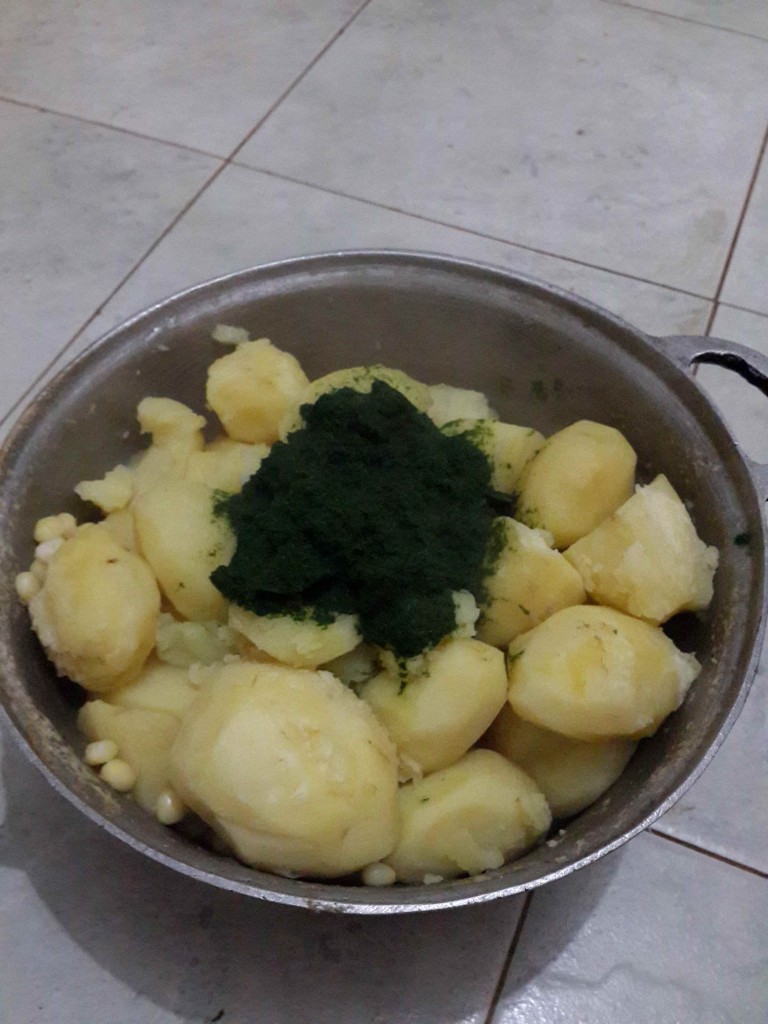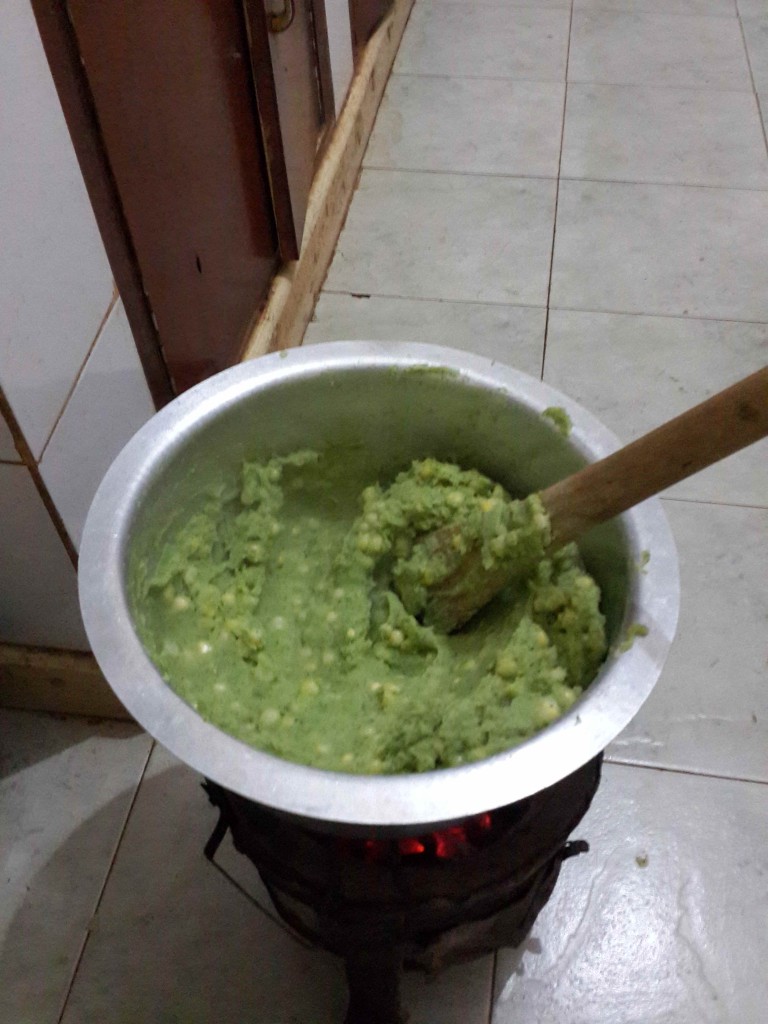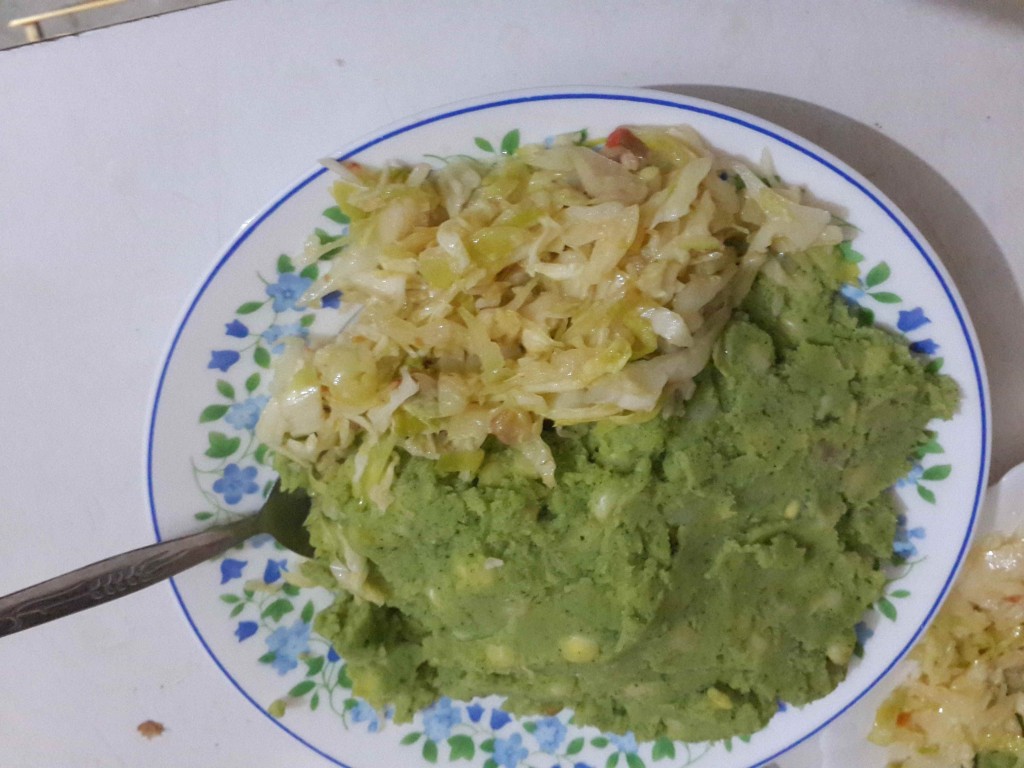Lol. Yes. I mean it. There’s a way to make mukimo like a modern woman while still keeping them Kikuyu roots. As I have stated here before, I’m no mukimo fan but that doesn’t mean I can’t cook it. Mum has ensured that I must and can. And that’s exactly what I did some night last week. And since I was in a random photo taking mood, I documented the process.
Mukimo is pretty much the easiest thing to make. Any Kikuyu dish is easy to make. 😀 Even Karen Blixen alluded to this historical fact in Out of Africa. She had this Kikuyu young man she trained to cook called Kamande. (She writes it as Kamante though. One wonders how many more words we write the way the English taught us, instead of how the were originally. Story for another day.) She describes Kamande thus:
In his heart he did, I feel, all the time, look upon the trouble that we give ourselves about our food, as upon a lunacy.
Tell me you also don’t think the trouble people go through to transform food into something it’s not isn’t lunacy? I have sat in restaurants and tried to figure out if what I was really having was chicken only to discover bones at the end. I digress. Mukimo is a pure mixture of real food. You start with the maize. Boil the maize, preferably on wood fire. Trust me, it’s much faster that way. And tasted better. But if not, go the cooker way. We’re making it modern anyway.
Once the maize is halfway done, add potatoes, peeled, and uncut. Cover the sufuria or pot and let the mix boil until you feel they are ready. You just know. Now, there’s something we call kahurura. If you know what that is in English, please let me know. Kahurura is the best vegetable for making mukimo. You could use pumpkin leaves too, but it’s simply not the same. End of story. The old way of adding it to the mix is just peeling the spiny parts and placing the leaves on top of the potatoes.
Enter the “modern” way. Got a blender? Perfect. Cut the kahurura and boil it separately. Let it cool and then blend it until it’s an even mix. Haya. Back to our main pot. Kerura i.e. strain the water out of it. Get armed with your mwiko. Add the kahurura uji into the potato-maize mix. You can take out some of the potatoes to eat. Hehe. Mum loves doing that.
Add salt. Mash. Mash. Mash. Kima. That’s why it’s called mukimo. At this point, it’s all about mashing. Otherwise you’ll have potatoes all over the place. You should not leave any potato unmashed. Otherwise there’s no point mashing it in the first place.
Now, this dish is ready as it is. But, if you want to give it an extra nice taste. Chop some onions and fry them until, of course, they are golden. Add them to the mukimo and mix.
And that, my friends, is how you make mukimo nice and modern. Forget about food colour and that other stuff I see in hotels.
If you want, you can add beans too. For some reason, beans are not that popular in my house nowadays, despite the fact that back when dad was young, he claims they would eat githeri with beans thrown very far apart from each other, compared to the maize. Let us not go into that topic. Also, he loves cabbage, so every meal has to have cabbage. Another Kikuyu stereotype, reinforced, ladies and gentlemen.






Hahaha… You are hilarious even in your writing! Great recipe… “Kima! That’s why it’s called mukimo” Lol
😉
Kahurura ni pumpkin leaves..”mahuti ma malenge”.
Not at all. Those are two different greens.
NO PLEASE!
Haha nice piece
Thanks for sharing. I will try out the recipe tonight.
I’ve always wondered what those greens are in English. Everyone says pumpkin, but we don’t eat pumpkin leaves (in the US) and so I was always worried about trying to cook with them. I finally found reference in a book called African Indigenous Vegetables in Urban Agriculture. It’s scientific name is Cucurbita Ficifolia, also known as Malabar Gourd or Fig-Leaved Gourd.
I just bought the seeds and can’t wait to grow so I can have Mukimo the way it’s supposed to be!
Thanks for the review on how to make it.
Haha my mom puts aside some potatoes for us too 🙂
hahahaha hilarious nice piece just what i was looking for
Is kahurura leaves the leaves in the squash plant? If anyone has found where to get them please post 🙂 this is a great mukimo recipe and I want to try cooking it.
Ah ! That’s the name. I’d say it’s a variation of squash, the one with spiny stems. People actually grow them locally.
Good one.keep up Shiko
Nice recipe making that to my wife tomorrow hehe and i will remove one potato to eat.
This article is soooo full of comedy! Quiet hilarious! I laughed all along as i literally imagined my late mum putting some potatoes on the side. I think where i grew up potatoes were somehow scarce.
Khai hii article imenimaliza🤣🤣🤣🤣🤣🤣
Kima…kima…kima biú
Hilarious😂
My late mom’s (God Bless her soul) version substituted kahurura or pumpkin leaves with fresh green peas giving a lovely green color & a textured taste.
Nice job bringing back those memories😍